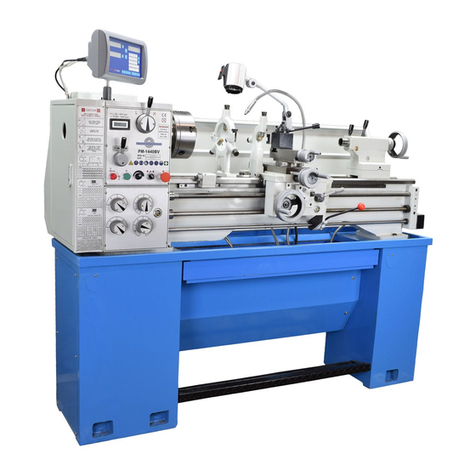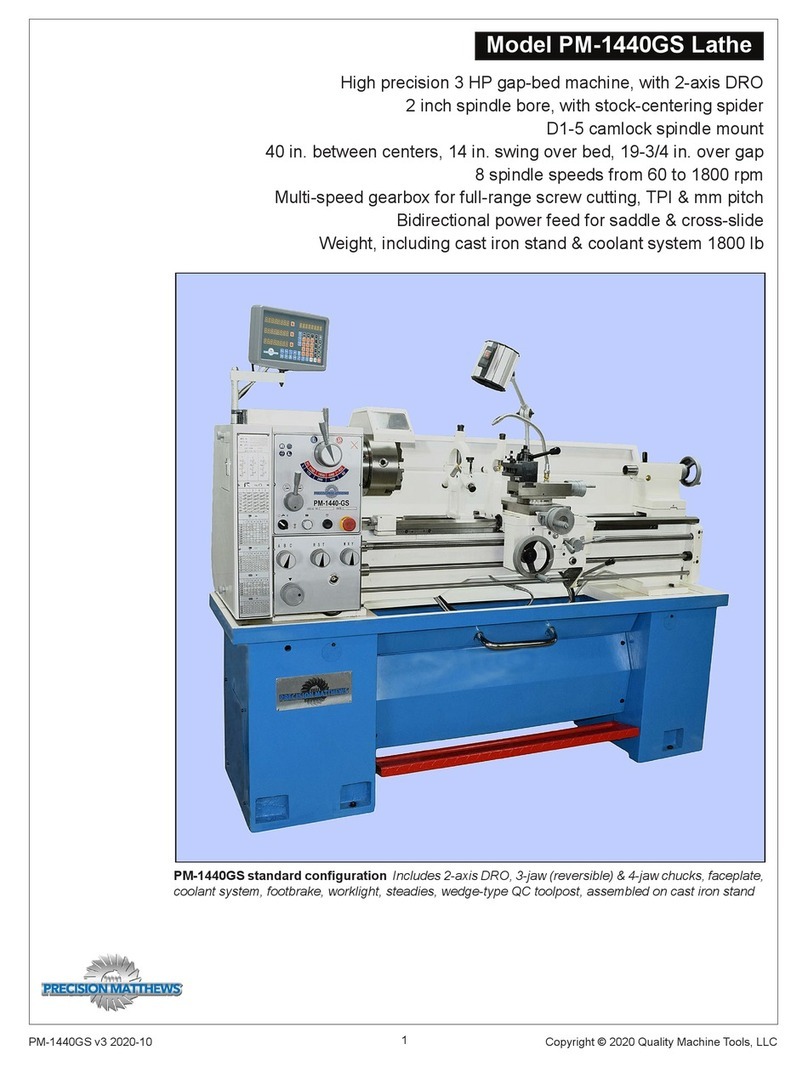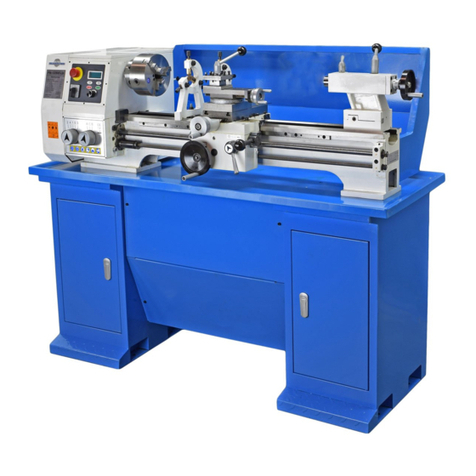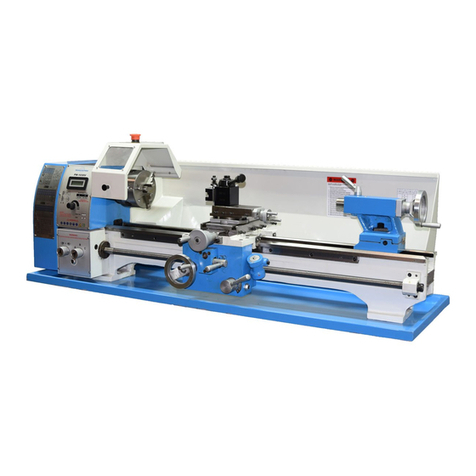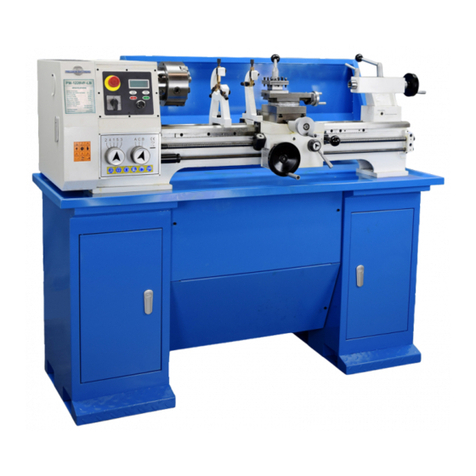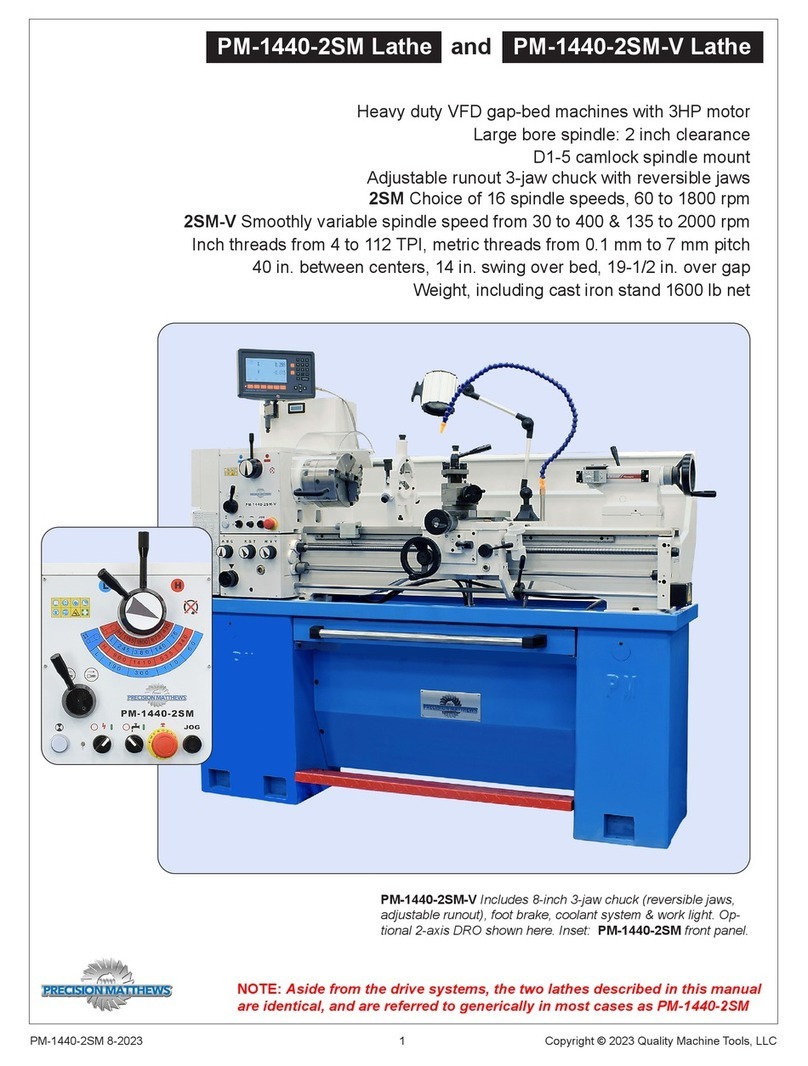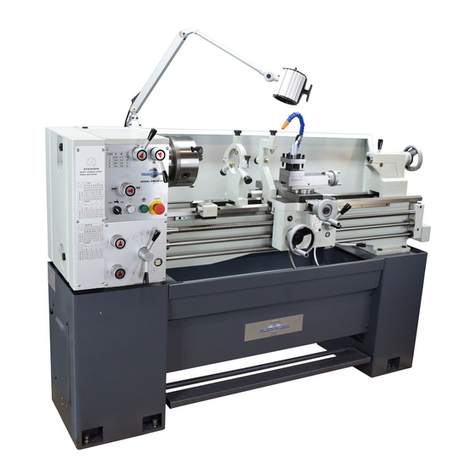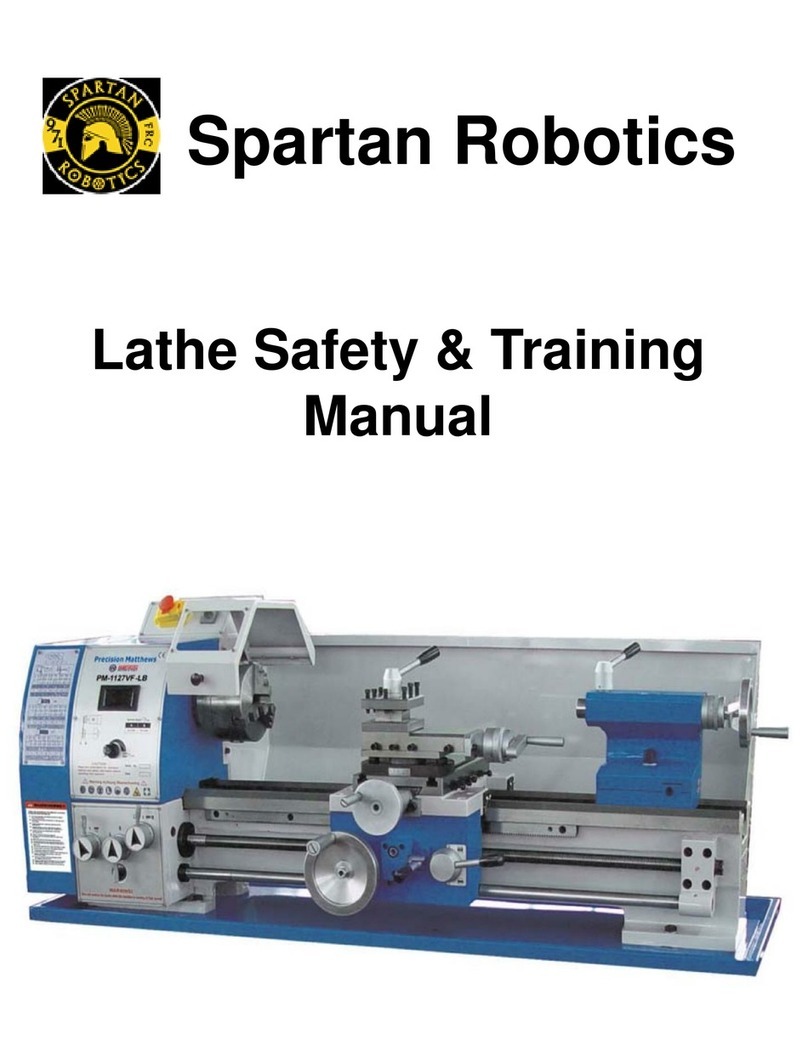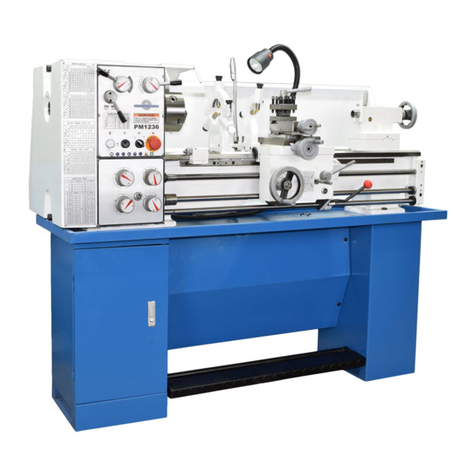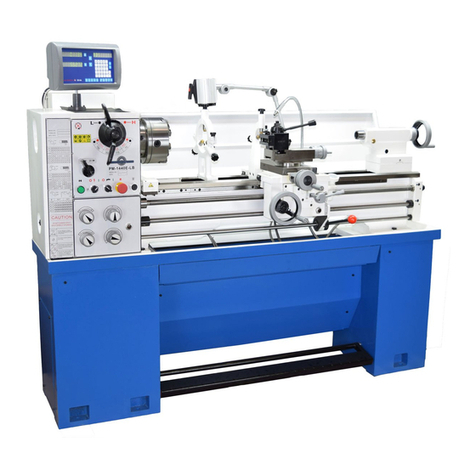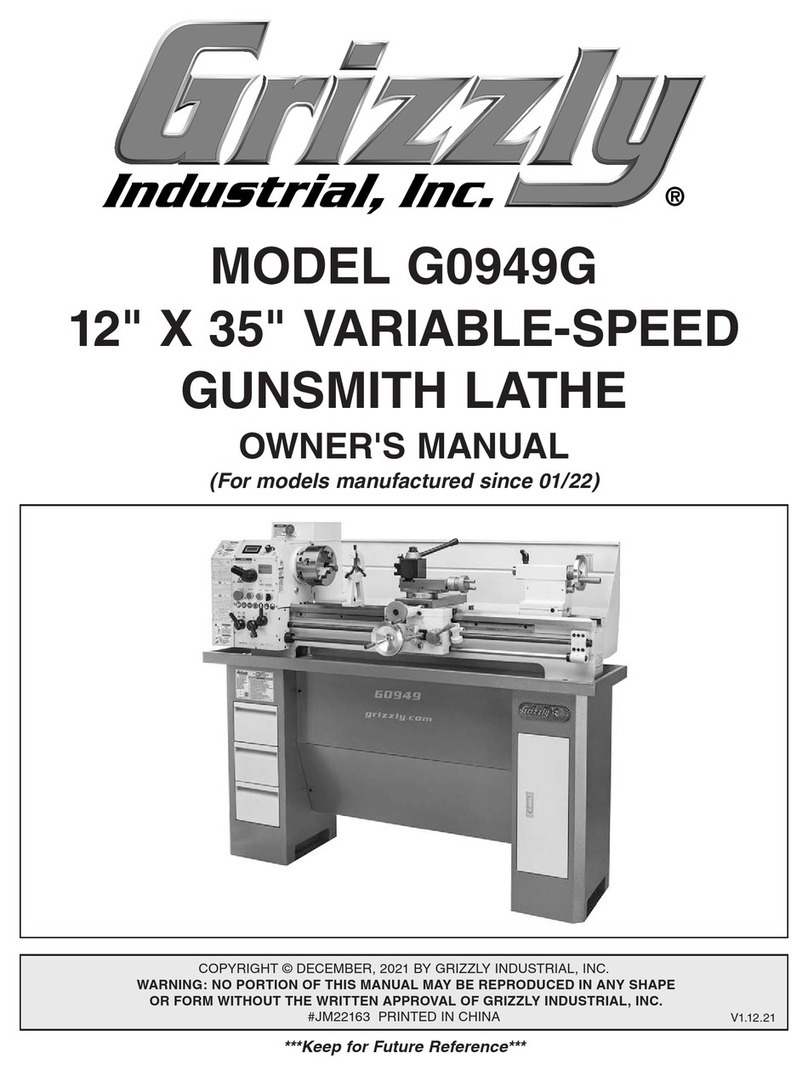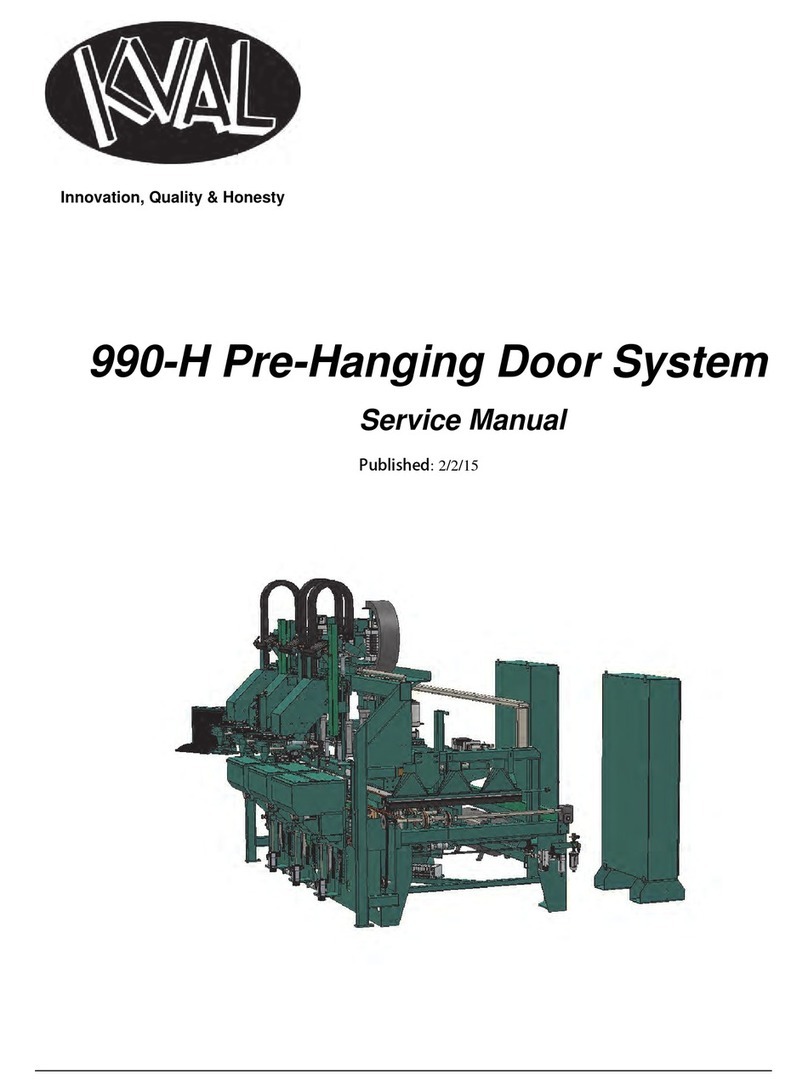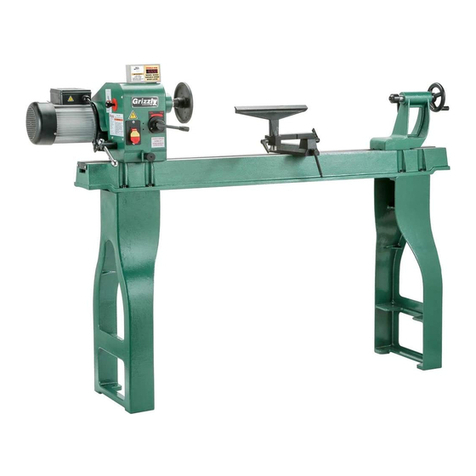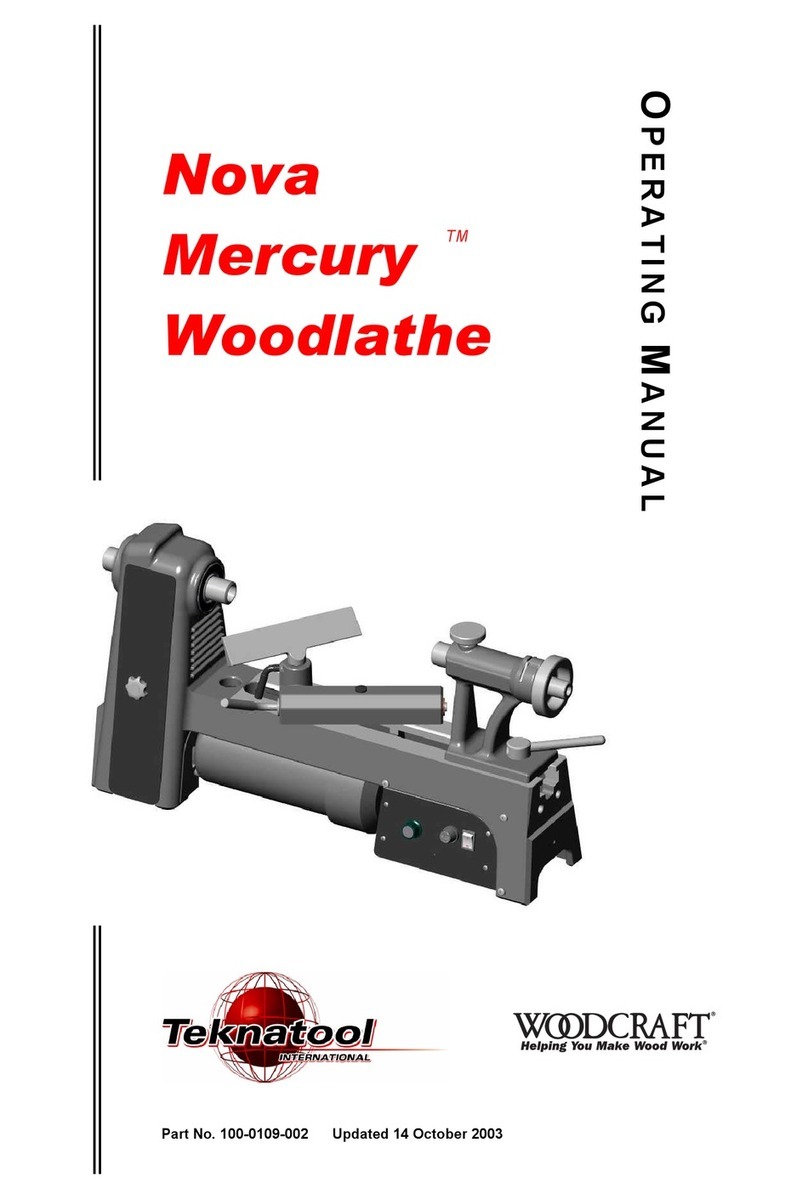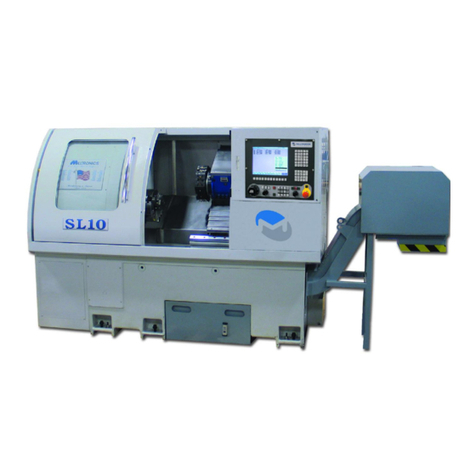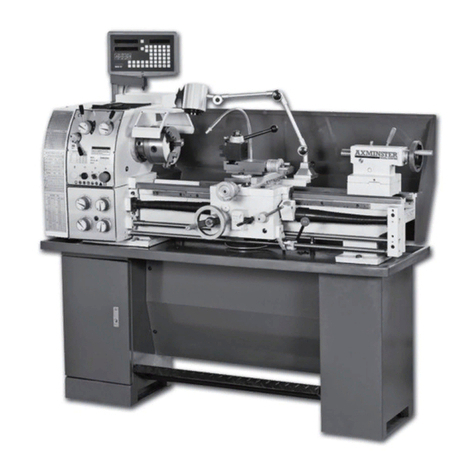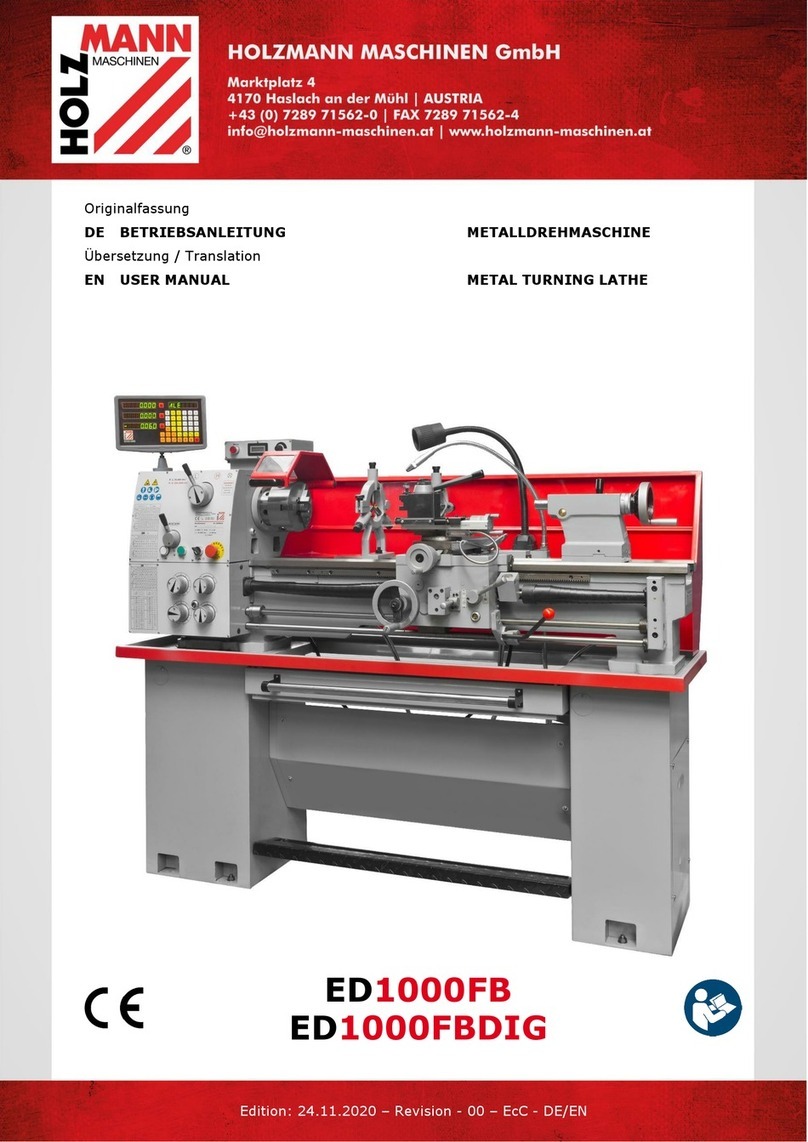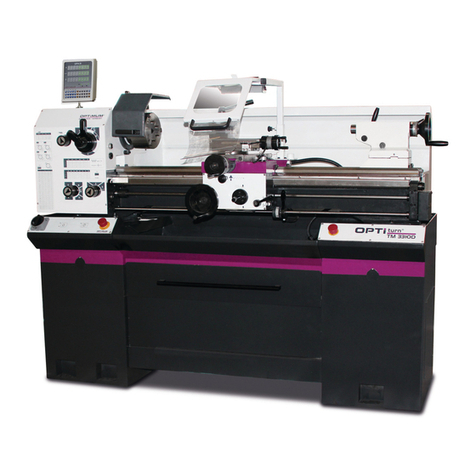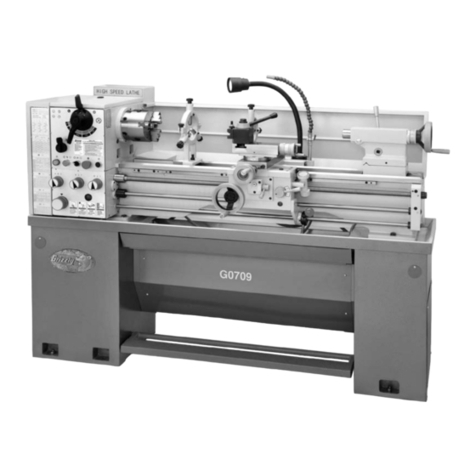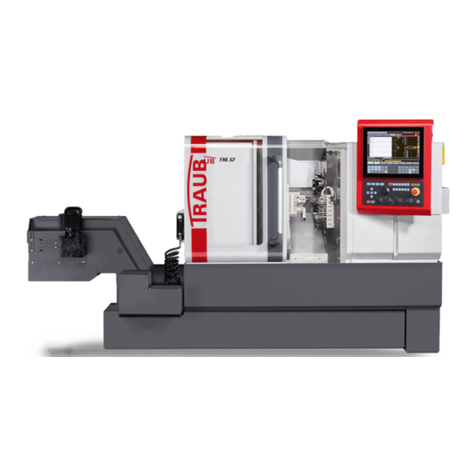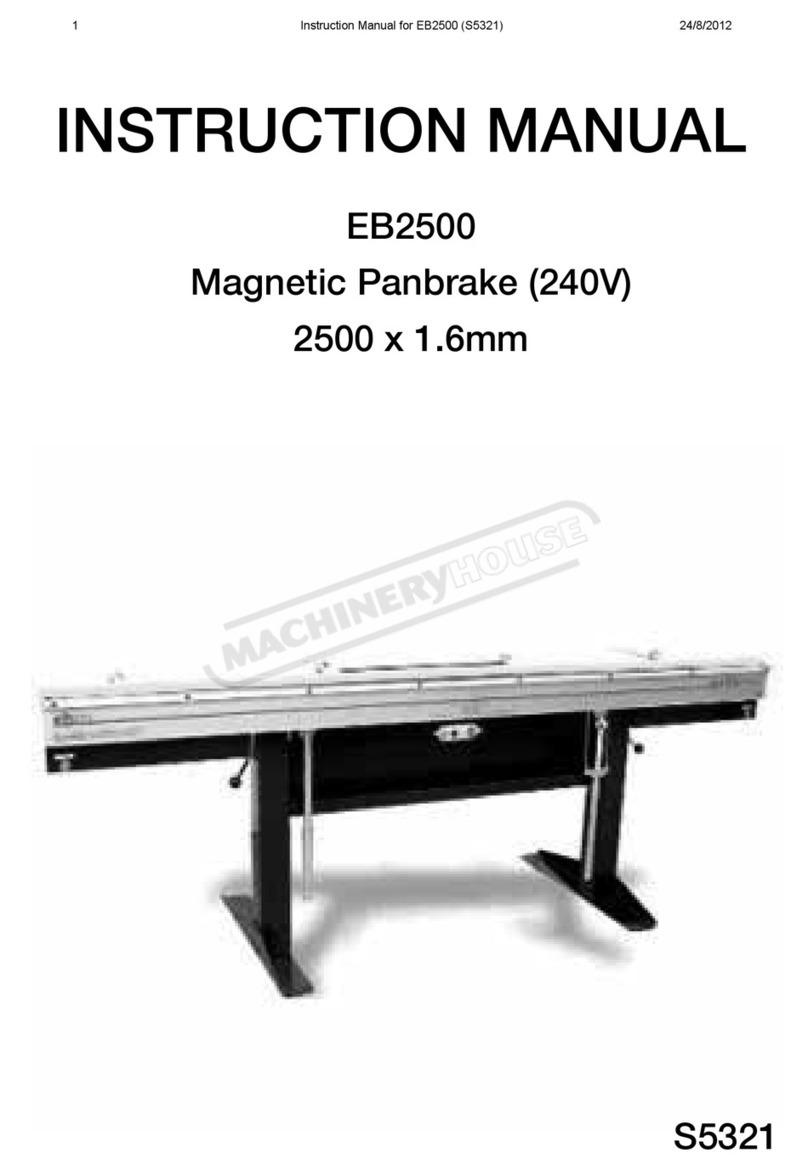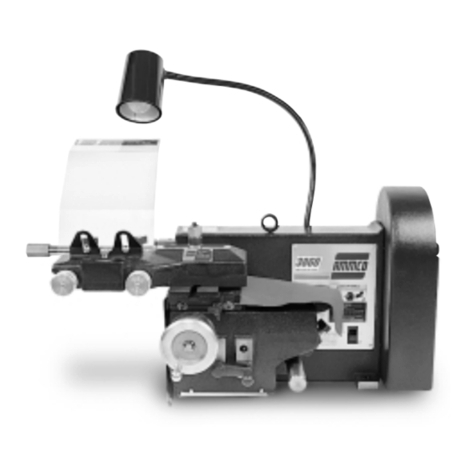
3 Copyright © 2021 Quality Machine Tools, LLCPM-1340GT v8 2021-04
Section 1 INSTALLATION
THESE ARE THE MAIN POINTS TO WATCH OUT FOR!
But read the following pages for more information
• Handling the lathe is at least a two-man job.
• Lifting gear – sling, hoist or forklift – must be rated for at least 1 ton.
• Working location of the mill must allow space for removal of the belt cover at left, also
access to the coolant system (if installed) and the electrical box at the back of the head-
stock.
• Power requirement is 220 - 240V, 60Hz, 1φ (spindle motor 12A full load), or 3φ (9A full
load). Single phase only, 10A full load
• Extension cord not recommended; if no alternative, use 12 AWG not longer than 20 ft.
• Before connecting power check the following:
1. Machine on a rm footing, adequately secured to its stand.
2. Chuck camlocks tight, no wrench left in chuck.
3. Motor control switch OFF, mid-travel (Figure 1-6).
4. Carriage and cross slide approx. mid-travel, power feed disengaged (Figure 1-7).
5. Headstock gear selectors set for the lowest spindle speed (Figure 1-5).
1. Prepare the working location for the stand. If you in-
tend to use an engine hoist, there must be room for
the hoist, Figure 1-3. If not, a forklift and slings may
be a better option. If only an engine hoist is avail-
able, with limited space either side, the machine can
be fully assembled on a pair of 4-wheel dollies, then
rolled to its nal position. The assembly can then
be raised by screw jacks or other means to free the
dollies.
2. Position the LH and RH stand cabinets 40-1/4 inch-
es apart in the lathe’s nal location. Install the front
panel between the two stand cabinets.
3. Highly recommended!
Install leveling mounts rated for 250 lb each at the
corners of the stand cabinets. Depending on stud
size drill four 3/8" or 1/2" holes on the underside of
each stand. Alternatively, plan on leveling the ma-
chine with the supplied screws front and back, Fig-
ure 1-1, then pack metal shims under the cabinet
rims for a rock-solid installation.
4. Position the chip tray on the stands, aligning the
SETTING UP THE LATHE
The PM-1340GT is shipped in three packing cases, one
for the machine/chip tray/front panel/back splash, one
each for the left and right hand stand cabinets. The fol-
lowing procedure makes use of an engine hoist, mini-
mum weight rating 1 ton.
Figure 1-1 Supplied leveling screws
6 holes for mounting bolts with the corresponding
threaded holes on top of the cabinets. Optional:
apply double-sided adhesive tape to the bearing
surfaces on top of the cabinets. This will keep the
through holes aligned, making installation much
easier. For a solid installation — no rocking — use
very thin non-foam tape.
5. Remove the packing case from the pallet, then un-
bolt the machine from the pallet.
6. Balancing the lathe on a single-point hoist may take
a few tries. Run the carriage and tailstock down to
the headstock as far as possible without interfering
with the slings and stretchers, see the next step.
6. Run two 1000 lb slings under the lathe bed and up
to the hoist hook, with stretchers above and below
